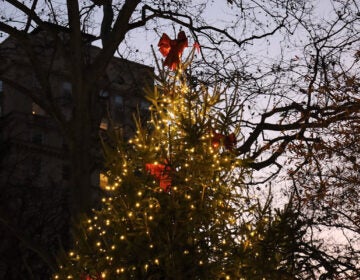Celebrating centenary of John Cage in music and art
The 100th anniversary of the birth of composer John Cage gives musicians a chance to dust off their scores of “Aria” and “4’33′” to pay tribute to the giant of midcentury American avant-garde.
His influence ripples so wide, through so many stripes of 20th century culture, that art galleries are getting in on the action, too.
Orchestra 2001 is currently engaged in a series of Cage concerts, at several venues — at the Barnes Foundation on Friday and at Swarthmore College on Saturday.
The program includes “Credo for Us,” performed in part with random sound bites from live radio broadcasts, and the infamous “4’33’,” a silent, non-musical piece where the ambient sounds generated by a room filled by a listening audience fill the aural vacuum.
Conductor James Freeman says he created a brand-new arrangement of “4’33’.”
“He was very serious, even though sometimes — in the later works, especially — he was incredibly whimsical,” said Freeman. “There’s a really fine line in Cage’s works, especially the later works, because there is a seriousness about them, he’s really trying to get people to experience life and music in different ways. At the same time, there is an underlying humor about many of them.”
Pieces like “Credo” and “4’33′” show Cage at his loosest, allowing chance and uncontrolled sounds to dominate the piece. In other pieces, Cage could be very precise.
In “Sonatas and Interludes for Prepared Piano,” the solo pianist plays an instrument that has been altered by fixing small objects to the strings inside the piano. It’s anything but random.
“Things like erasers, bolts, nuts, rubber washers, pieces of wood, pieces of felt, in very, very specific places,” said Freeman. “In the upper registers of a piano, for each note there are three strings. Cage specifies very clearly which of those three strings you put the object between, and exactly how far from the dampers the object is supposed to be placed. It’s very specific and produces exactly the sound that he’s looking for.”
In October, the Philadelphia Museum of Art will launch an exhibition of work by Cage and his cohorts, choreographer Merce Cunningham, artists Robert Rauschenberg and Jasper Johns, and the godfather of modernism, Marcel Duchamp.
Called “Dancing Around the Bride” (Oct. 30 – Jan. 21), the exhibition of art, sound, and dance will be centered on the museum’s vast holdings of Duchamp’s work, in particular the painting “Bride” (1912).
The five artists often collaborated together, having each discovered on their own a similar approach to modern art, one that often involved chance, accident, and commonly found objects and movements.
“In many ways, they are parallel,” said museum curator Carlos Basualdo. “What Cage did to sound and music is very much in sync with what Duchamp did to our understanding of what art is.”
The Philadelphia Museum of Art is partnering with the local avant-garde music presenter Bowerbird to stage a series of Cage-related concerts at various venues in Philadelphia during the exhibition.
WHYY is your source for fact-based, in-depth journalism and information. As a nonprofit organization, we rely on financial support from readers like you. Please give today.





